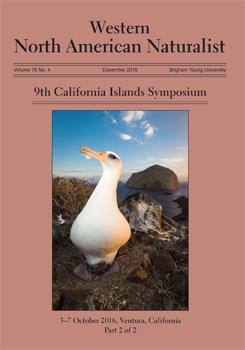Spore-bearing and seed-bearing plants differ in their ability to colonize islands from mainland sources. To assess the importance of these differences, we investigated patterns of species richness and species composition for the native bryophyte, fern, and seed plant floras of the California Channel Islands. Native richness was regressed against island area, maximum elevation, distance to mainland, distance to nearest propagule source along prevailing wind trajectories, and latitude for the 3 plant groups. Ordinations, Mantel tests, randomization tests, and an analysis partitioning beta diversity into turnover and nestedness components were used to identify similarities and differences in species composition across the 3 groups. Patterns of species richness were mostly consistent across the 3 groups, with island area and maximum elevation being much more important than distance to mainland or distance from nearest propagule source. Patterns of species composition were also generally consistent across the 3 groups. The 3 floras exhibit similar patterns of compositional change across the archipelago and these patterns are not driven by geographic distance among islands. Island area and maximum elevation were significant predictors of compositional change, but the 2 distance metrics were not. The seed plant flora exhibited strong turnover between the 4 northern and 4 southern islands, while the bryophyte flora exhibited southern islands floras nested within those of northern islands. We interpret these findings as suggesting that ecological filtering is more important than dispersal limitation for developing both seed-bearing and spore-bearing plants on the islands.
How to translate text using browser tools
12 December 2018
Biogeographic Patterns among Seed-Bearing and Spore-Bearing Plants across the California Channel Islands
Benjamin E. Carter,
C. Matt Guilliams
ACCESS THE FULL ARTICLE






